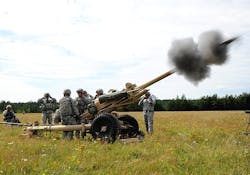Army turning attention to software engineering and reuse for common fire-control system
Officials of the Army Contracting Command at Picatinny Arsenal, N.J., announced a $7.2 million contract modification Thursday to RDM Engineering in Oak Ridge, N.J., for software engineering services that include software design and development a common fire-control system.
The contract modification includes software coding, implementation, testing, systems integration, and fielding support for the Army Research, Development, Engineering Command (ARDEC) Armament Research Development and Engineering Center at Picatinny Arsenal.
Army experts are developing a common fire-control system for computerized weapon systems like mortars, towed artillery, self-propelled artillery, and missiles in an effort to cut the costs of testing, development time, maintenance, and training for Army weapons crews.
Such a common fire-control system would provide a familiar interface across a variety of weapons platforms to weapons crews, which is expected to ease weapons use and enable crews to learn new systems quickly as new products and systems upgrades go to the field.
A common fire-control system also could speed weapons development and fielding because systems designers could reuse software and hardware rather than developing each new system from scratch.
Army experts have been working on developing a common fire-control system since at least 2000 when systems designers reused software and hardware of the 120-millimeter Mortar Fire Control System-Heavy (MFCS-H) on the 120-millimeter Mortar Fire Control System-Dismounted (MFCS-D) for infantry soldiers.
That move saved the Army three years and nearly $10 million, and encouraged systems designers to start reusing fire-control hardware and software on the Army's DragonFire II mortar system; Portable Excalibur Fire Control System heavy artillery system; Lightweight Handheld Mortar Ballistic Computer; M119 105-millimeter towed howitzer; Towed Artillery Digitization; Expeditionary Fire Support System Demo; and MFCS for Stryker, officials say.
story continues below
Army leaders reportedly also are working on extending the common fire-control system technology to land-based missiles, as well as to weapons systems in other military services. Experts also are working on cyber security for the common fire-control system.
On the software engineering contract modification announced Thursday RDM Engineering will do the work at Picatinny Arsenal, N.J., and should be finished by July 2017.
For more information contact RDM Engineering online at www.rdm-engineering.com, the Army Contracting Command at http://acc.army.mil, or the ARDEC Armament Research Development and Engineering Center at www.ardec.army.mil.
Learn more: search the Aerospace & Defense Buyer's Guide for companies, new products, press releases, and videos
